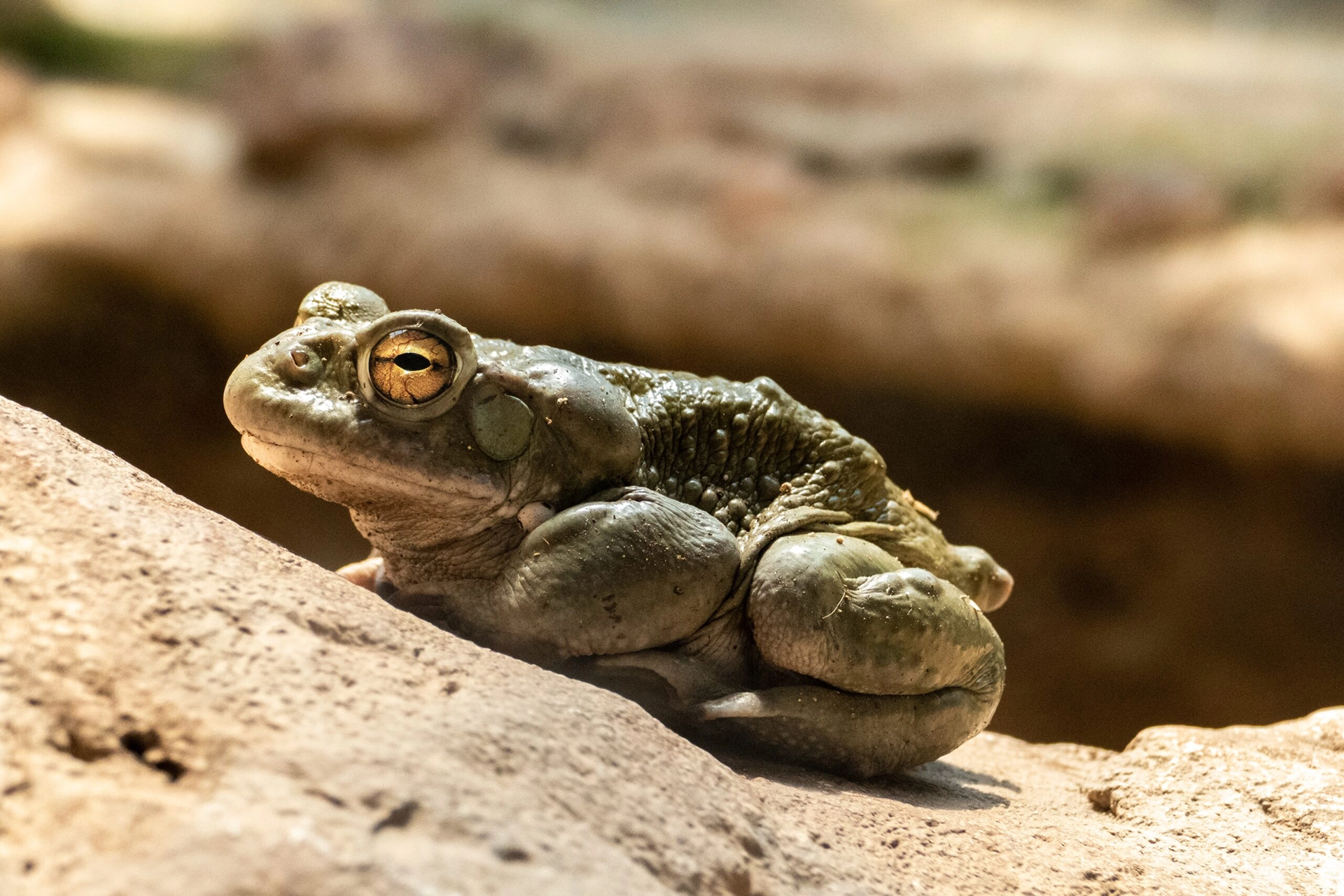
Explained: The Sonoran Desert Toad and Your Dog
The Sonoran Desert, which covers the southern half of Arizona, is home to a variety of unique plant and animal species, including several species of frogs.
One of the most notable frog species found in the Sonoran Desert is the Sonoran Desert toad, also known as the Colorado River toad or the Bufo alvarius. This large toad is recognized for its striking appearance and potent venom. It has a squat body, warty skin, and can grow up to 7 inches long!
The Sonoran Desert toad spends most of its time burrowed underground, emerging during the rainy season to breed and feed.
When is it Common to See the Sonoran Desert Toad?
Sonoran Desert frogs are most commonly seen in Arizona during the monsoon season, which typically occurs from late June to early September. This is when the region experiences increased rainfall and higher humidity levels, creating more favorable conditions for these toads.
The Sonoran Desert toads are known to be opportunistic breeders, taking advantage of the temporary pools and water sources that form after heavy rains. During this time, they become more active and visible as they emerge from their underground burrows in search of water and potential mates.
Is the Sonoran Desert Toad Poisonous to Dogs?
Sonoran Desert toads can have potentially harmful effects on dogs if they come into contact with them or eat them. These toads are known for producing a potent venom that serves as a defense mechanism against predators.
The venom of Sonoran Desert toads contains a compound called bufotoxin, which is a powerful neurotoxin. If a dog bites, catches, or licks a Sonoran Desert toad, the venom can be absorbed through the mucous membranes in the mouth, leading to poisoning.
The severity of the effects can vary depending on the size of the dog, the amount of venom ingested, and the dog’s individual sensitivity to the toxin.
Sonoran Desert toad dog symptoms can include:
- Excessive drooling and foaming at the mouth
- Pawing at the mouth or face
- Red and inflamed gums
- Vomiting
- Disorientation or confusion
- Rapid or irregular heartbeat
- Difficulty breathing or panting excessively
- Seizures or tremors
If you suspect that your dog has come into contact with a Sonoran Desert toad or is exhibiting any of these symptoms, it is important to seek immediate veterinary attention.
Treating an Incident Between Colorado River Toads and Dogs
Typically, we treat Sonoran Desert toad poisoning in dogs by providing supportive care and managing the symptoms. The specific treatment approach may vary depending on the severity of the poisoning and the dog’s individual condition.
Here are some common steps you can expect when treating Sonoran Desert toad poisoning:
- Stabilization: Our Revel Vets will assess your dog’s vital signs and provide immediate supportive measures if necessary. This may include oxygen therapy, IV fluids to maintain hydration, and medications to control seizures or abnormal heart rhythms.
- Decontamination: If the toad’s venom is still present in the dog’s mouth, we may rinse their mouth with water to remove any remaining toxin. It’s crucial to be cautious during this process to prevent the dog from inhaling any water.
- Symptomatic Treatment: Depending on the symptoms exhibited, we may administer medications to control nausea, vomiting, and pain. Anti-seizure medications may be given if seizures occur. Medications to support cardiac function or regulate heart rhythm may be utilized if needed.
- Monitoring and Observation: The dog will be closely monitored to assess their response to treatment and to ensure that their vital signs stabilize. Monitoring may involve frequent checks of heart rate, breathing, temperature, and overall neurological status.
If you suspect your dog has been exposed to Sonoran Desert toads or is showing symptoms of poisoning, seek veterinary care immediately. Rapid intervention can significantly improve the chances of a positive outcome for your pet.
Remember…
The chances of your dog coming into contact with Sonoran Desert toads is more common during the rainy season. Taking precautions such as supervising your dog during outdoor activities, avoiding areas where toads are commonly found, and keeping your yard free of potential toad hiding spots can help reduce the risk of exposure.
As always, we adore you and think you’re the best human ever. Give us a call when you need us. We are so happy to serve you and your pet!